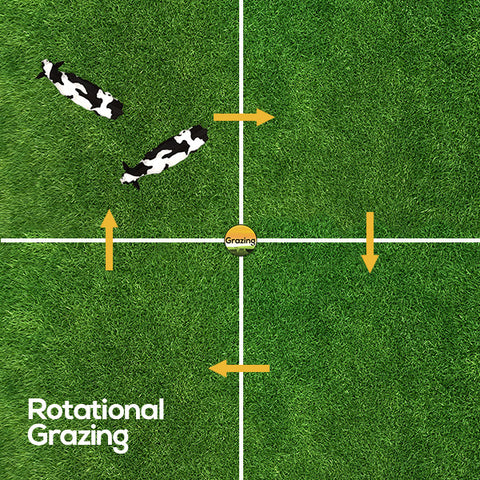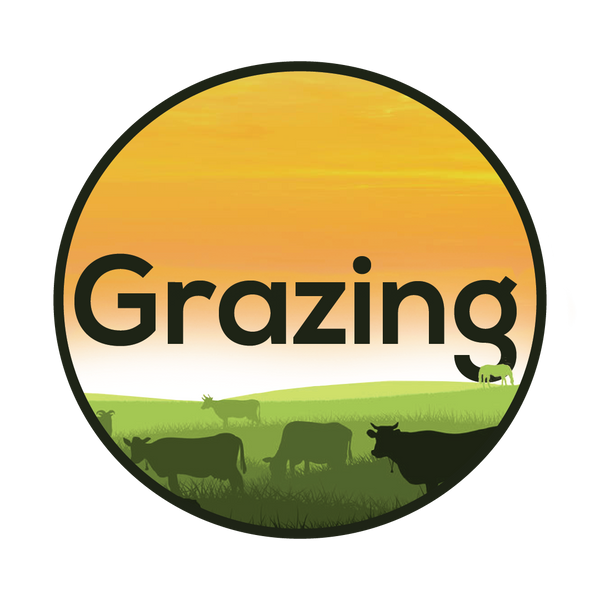
Rotational grazing involves rotating the animals from paddock to paddock and introducing a new section of grass on a defined schedule.
There are loads of different ways that one can plan a rotational grazing system. Some key pieces that need to be considered are water access and managing the grass in such a way that it has a chance to regrow and won’t get nipped again within that critical first 21 days of regrowth. Rotational grazing needn’t involve daily moves. You could move your animals on a weekly basis as long as you give your forage a chance to regrow before the animals hit it again.
PROS
- Forage has a chance to regrow without pressure (sending roots down deeper, which helps protect against future drought situations).
- Fertility is spread out more evenly, and there tends to be less soil compaction because the animals are moving.
CONS
- System takes a bit of infrastructure in terms of fencing off paddocks and water access.
- Time required to move the cattle.

